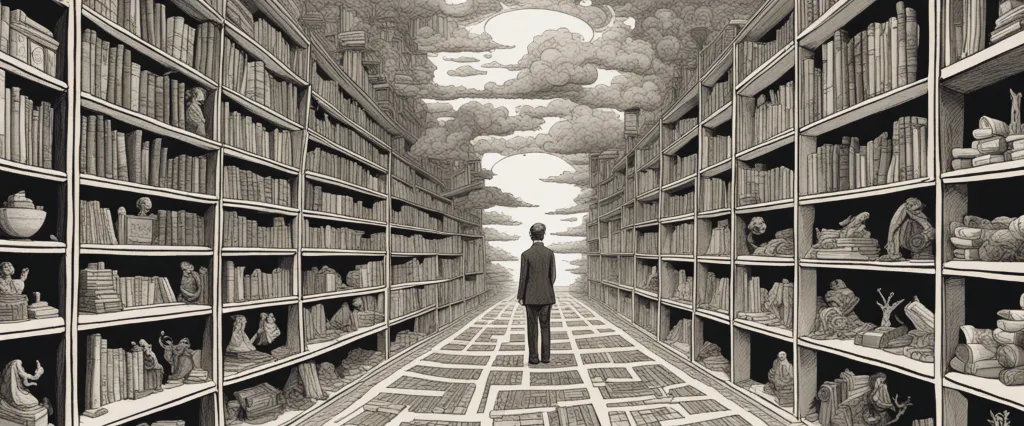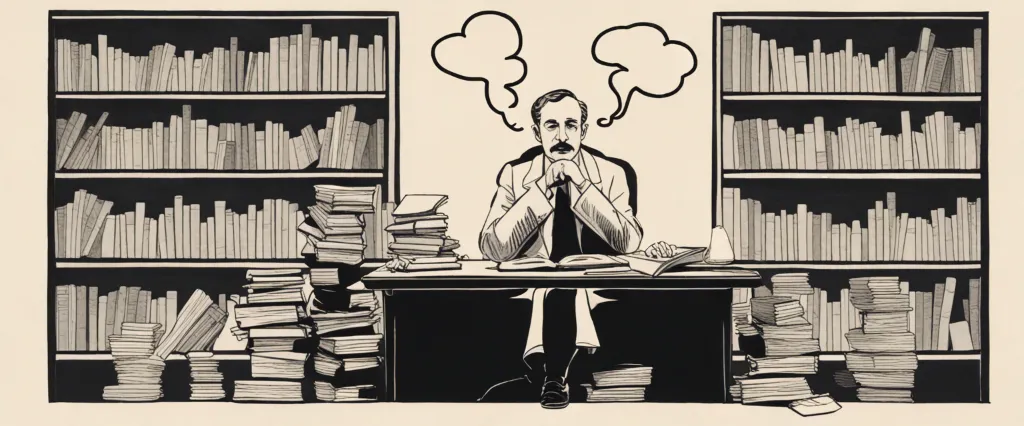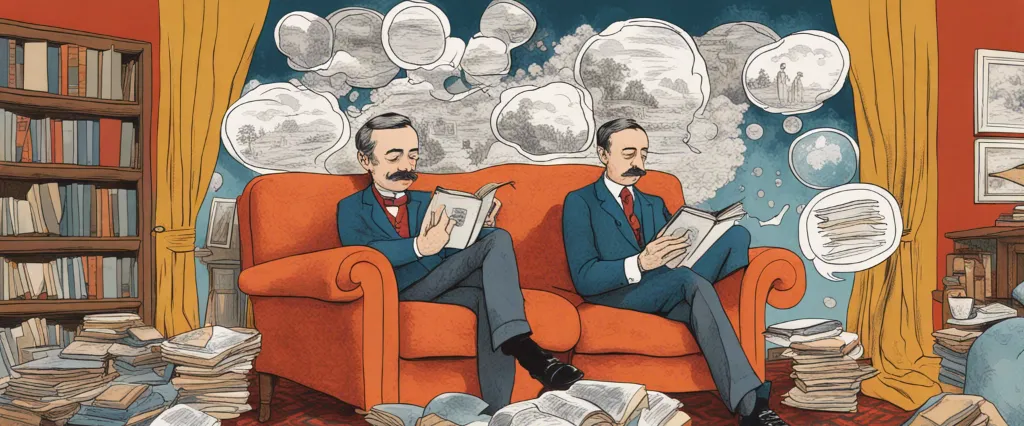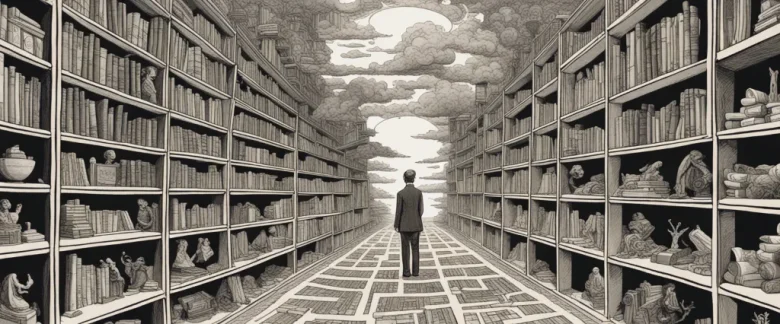
In “The World of Yesterday,” Stefan Zweig invites readers on an intimate journey through his own life, exploring the defining moments and tumultuous changes that shaped the early 20th century. Zweig, an acclaimed Austrian writer and intellectual, weaves a captivating tapestry of personal anecdotes, historical events, and cultural observations. Through his vivid prose, Zweig paints a detailed picture of a world on the brink of unprecedented transformation, while delving into his own experiences as a witness to history. In every chapter, readers will be transported to a bygone era alive with passion and uncertainty, as Zweig’s unique perspective offers invaluable insights into the complexities and contradictions of the human condition.
Chapter 1: A Childhood in Vienna
Chapter 1: “A Childhood in Vienna” from Stefan Zweig’s book “The World of Yesterday” provides a comprehensive and vivid account of the author’s early years growing up in Vienna at the end of the 19th century.
Zweig begins by imparting a sense of the overwhelming grandeur and cultural richness that characterized Vienna during his childhood. He describes an era when the city was considered the center of the world, bustling with intellectual and artistic life. Zweig reminisces about the vibrant coffeehouse culture, the thriving art scene, and the intellectual giants of his time, including Sigmund Freud and Gustav Mahler, who frequented his father’s house.
The author’s recollections then shift to his own family. Zweig affectionately portrays his parents and their unique personalities. His father, a prosperous textile manufacturer, was a worldly and intellectual man, while his mother emanated warmth and nourished young Stefan’s love for literature and stories. Despite their differences, the family enjoyed a harmonious and loving relationship.
Zweig reflects on the educational system of the time, emphasizing the great importance placed on creativity and individuality. He characterizes the academic environment as one of intellectual freedom and nurturing, with an emphasis on cultivating students’ unique talents and interests.
In this chapter, Zweig also introduces a deep-rooted anti-Semitism that was prevalent in Austrian society, highlighting an incident where he encounters blatant discrimination as a child. He explores the subtle ways in which anti-Semitism infiltrated everyday life, and how it affected his own sense of identity.
Throughout this chapter, Zweig weaves a vivid tapestry of his childhood in Vienna, painting a picture of a society on the brink of profound change. The stage is set for the subsequent chapters, where the author will delve further into his personal experiences and societal shifts that occurred during his lifetime.
Chapter 2: The Belle Époque and Cultural Flourishing
Chapter 2 of “The World of Yesterday” by Stefan Zweig explores the period known as the Belle Époque, a time of cultural flourishing in Europe from the late 19th century until the outbreak of World War I. Zweig reflects on his personal experiences during this era, highlighting the vibrant atmosphere and flourishing intellectual and artistic scenes.
Zweig begins by detailing the societal changes that occurred during this period, emphasizing the newfound importance of leisure and the emergence of cafes and literary salons as meeting places for intellectuals, artists, and writers. He describes the stimulating conversations and debates that took place in these spaces, allowing for the exchange of ideas and the birth of new artistic movements.
The author expresses the significance of great minds and personalities of his time in shaping European culture. Figures like Rainer Maria Rilke, Sigmund Freud, Hugo von Hofmannsthal, and Richard Strauss are celebrated for their contributions to literature, psychology, poetry, and music. Zweig highlights the impact of these innovators, whose works captured the zeitgeist of the Belle Époque and brought about a cultural renaissance.
Furthermore, Zweig emphasizes the cosmopolitan nature of this period, where artists and intellectuals from various nationalities and backgrounds gathered in European cities like Vienna, Paris, and London. He reflects on this diversity and the sense of internationalism prevalent during this time, where people from different cultures and languages coexisted harmoniously, fostering collaboration and mutual admiration.
However, while the Belle Époque is celebrated for its cultural grandeur, Zweig acknowledges the underlying tensions and impending darkness that loomed over Europe. The author provides glimpses of political instability and the rising nationalistic sentiments that ultimately led to the outbreak of World War I, forever shattering the idyllic Belle Époque.
In summary, Chapter 2 of “The World of Yesterday” captures the spirit of the Belle Époque, emphasizing its cultural flourishing, intellectual vibrancy, and cosmopolitanism. Zweig reflects on the great minds and personalities of his time, acknowledging their transformative contributions to European culture, while also recognizing the underlying political tensions that would ultimately bring about the end of this era of cultural splendor.
Chapter 3: The Onset of World War I
In Chapter 3 of “The World of Yesterday” by Stefan Zweig, titled “The Onset of World War I,” the author reflects on the tumultuous events that led to the outbreak of one of the most devastating conflicts in human history.
Zweig begins by highlighting the atmosphere of optimism and progress that dominated Europe in the early 20th century. Technological advancements, scientific discoveries, and an overall sense of harmony among nations seemed to herald a new era of lasting peace. However, beneath this façade of tranquility, tensions were building due to complex political and economic rivalries among major powers.
The author explores the underlying causes of World War I, such as nationalist aspirations, territorial disputes, militarism, and the system of alliances. He underlines the instability resulting from the disintegration of the Austro-Hungarian Empire, where ethnic tensions and aspirations for independence fueled the fire of conflict. The assassination of Archduke Franz Ferdinand in Sarajevo in 1914 acted as a spark that ignited a powder keg of long-standing grievances and ambitions.
Zweig further discusses the immediate aftermath of the assassination, with the series of ultimatums, military preparations, and alliances, which escalated the dispute between Serbia and Austria-Hungary into a continent-wide conflict. The author emphasizes the sense of disbelief and shock that permeated Europe at the time, as many had believed war would be averted until the very last moment.
As the nations mobilized for war, Zweig portrays the collective enthusiasm and initial optimism that swept across Europe. Nationalistic fervor, glorification of military might, and a belief in a swift and decisive victory blinded people to the horrors and destruction that awaited them.
In summary, Chapter 3 of “The World of Yesterday” portrays the intricate web of causes and events that led to the outbreak of World War I. It highlights the false sense of security and progress that preceded the conflict, and the rapid transformation of the European continent from peace to war.
Chapter 4: The Collapse of the Austro-Hungarian Empire

Chapter 4: The Collapse of the Austro-Hungarian Empire of “The World of Yesterday” by Stefan Zweig provides a detailed account of the events that led to the downfall of one of Europe’s greatest empires.
Zweig begins by describing the fragile nature of the dual monarchy, plagued by ethnic tensions and rivalries. He explores the complex system of governance within the empire, where various nationalities, languages, and cultures coexisted. However, this fragile balance started to crumble during the First World War.
Zweig highlights the impact of the war on the empire, both economically and socially. The war effort strained resources, leading to widespread poverty and hunger. Traditional hierarchies began to collapse as the empire faced immense challenges on all fronts.
The author goes on to discuss the rise of nationalism and the demand for self-determination among various ethnic groups within the empire. Nationalist movements, especially the Pan-Slavic movement, gained momentum, placing immense pressure on the Austro-Hungarian government. These tensions were further exacerbated by the empire’s alliance with Germany.
Zweig also delves into the political changes that swept through the empire during this period. He discusses the liberal political movement and its struggle to enact sweeping reforms, which were often met with resistance. The empire’s political leaders failed to adapt to the changing circumstances, ultimately leading to its collapse.
The chapter concludes with a reflection on the end of the Austro-Hungarian Empire and the subsequent disintegration into several independent nations. Zweig captures the profound impact of this collapse on the lives of the citizens as they faced a new world order, devoid of the former imperial grandeur.
In summary, Chapter 4 of “The World of Yesterday” explores the reasons behind the collapse of the Austro-Hungarian Empire, emphasizing the impact of the First World War, economic strain, rising nationalism, and political upheaval. The imperial edifice that once stood proudly as a symbol of cultural diversity gave way to a new era of independent nations, forever changing the political landscape of Europe.
Chapter 5: Exile and the Loss of Identity
Chapter 5: Exile and the Loss of Identity in the book “The World of Yesterday” by Stefan Zweig explores the author’s own experience of exile during World War II and the subsequent loss of his identity and sense of belonging.
Zweig begins by describing the initial shock of leaving his beloved homeland, Austria, and the life he had built for himself there. As a renowned writer and intellectual, Zweig had thrived in the vibrant Viennese cultural scene, surrounded by friends and fellow artists. However, the rise of Adolf Hitler and the Nazi regime forced Zweig, who was of Jewish descent, to flee in order to escape persecution.
The chapter delves into the challenges Zweig faced as an exile, emphasizing the profound loss of identity that comes with being uprooted from one’s homeland. He discusses how one’s sense of self is deeply tied to their roots and familiar surroundings, and without them, he felt like a “tree torn from its native soil.”
Zweig also reflects on the difficulty of finding a new home and a sense of belonging in a foreign land. Despite his efforts to integrate into his new surroundings, he felt like an outsider, constantly labeled as a “refugee” and viewed with suspicion. This loss of belonging further eroded his sense of self as he longed for the familiarity of his Austrian identity.
Furthermore, Zweig comments on the decline of Europe’s intellectual and cultural legacy during this period of turmoil. As many brilliant minds, like Albert Einstein and Thomas Mann, were forced into exile or faced persecution, he bemoans the devastating loss to humanity’s cultural heritage.
In summary, Chapter 5 explores the personal and emotional toll of exile on Zweig, highlighting the profound loss of identity and the struggle to find a sense of belonging in a foreign land. It exposes the devastating impact of political upheaval on individuals and the erosion of Europe’s intellectual and cultural legacy during that era.
Chapter 6: Witnessing the Rise of Fascism
Chapter 6: Witnessing the Rise of Fascism from the book “The World of Yesterday” by Stefan Zweig provides a vivid account of the author’s personal experiences and observations during the early years of the emergence of fascism in Europe.
Zweig begins by describing the initial fascination and appeal of fascism’s promises, which led to its rapid rise in popularity across the continent. He discusses his encounters with prominent fascist leaders such as Benito Mussolini in Italy and Adolf Hitler in Germany, offering firsthand impressions of their charisma and growing influence.
As an intellectual and pacifist, Zweig initially struggled to grasp the underlying ideology behind fascism and its potential consequences. However, he soon realizes the dire implications of this movement, as its followers propagate a rhetoric of hatred, nationalism, and rejection of democratic principles. Zweig recounts instances of violence and persecution committed by fascist groups against minorities, intellectuals, and political opponents, painting a grim picture of the erosion of civil liberties and the rise of militarism.
The author’s feelings of despair intensify as he witnesses his beloved Europe being transformed into a breeding ground for intolerance and aggression. He laments the loss of cultural diversity and the decline of intellectual discourse, as artists, writers, and scholars are silenced or forced into exile.
Ultimately, Chapter 6 serves as a warning about the dangers of fascism and the fragility of democratic societies. Zweig’s account offers valuable insights into the unraveling of European civilization during this tumultuous time, emphasizing the importance of vigilance and protection of democratic values against rising authoritarianism.
Chapter 7: The Destruction of Europe
Chapter 7 of “The World of Yesterday” by Stefan Zweig, titled “The Destruction of Europe,” provides a poignant account of the catastrophic events that unfolded in Europe during the early half of the 20th century. Zweig, an Austrian writer and intellectual, paints a vivid picture of the political and social upheavals that shook the continent and destroyed the world he once knew.
Zweig begins by describing the end of World War I as a time of immense hope, where peace and progress seemed within reach. However, the Treaty of Versailles, which imposed harsh reparations on Germany, sowed the seeds of discontent that led to the rise of Nazi Germany. Zweig laments the inability of the victors to find a more equitable resolution, ultimately condemning Europe to another brutal conflict.
The author then chronicles the devastating impact of World War II. He highlights the atrocities committed by the Nazis, the loss of countless lives, and the destruction of entire cities. Zweig himself, a Jew, was forced into exile and recounts the pain of leaving his beloved homeland. He expresses deep sorrow over the collapse of moral values and the disintegration of European culture, as nationalism and hatred tore societies apart.
Zweig’s account also reflects on the betrayal and mistrust that plagued post-war Europe, as the Allies struggled to manage the aftermath of the war and establish a foundation for lasting peace. He concludes with a somber reflection on the loss of the promising world he once knew, emphasizing the need to learn from these tragic events and work towards a future that prioritizes unity, understanding, and compassion.
Overall, Chapter 7 of “The World of Yesterday” captures the profound sense of loss and disillusionment that permeated Europe during this time, serving as a powerful reminder of the devastating consequences of division and hatred.

Chapter 8: Reflections on a Vanished World
Chapter 8: Reflections on a Vanished World of “The World of Yesterday” by Stefan Zweig reflects on the drastic changes and decline of Europe during the early 20th century. Zweig describes the profound sense of loss and nostalgia he experiences for a world that no longer exists.
Zweig begins by explaining how Europe was once a flourishing and vibrant continent, filled with diverse cultures, rich traditions, and intellectual pursuits. However, with the outbreak of World War I, this world was forever shattered. Zweig laments the destruction and devastation brought upon Europe by the war, as well as the subsequent rise of nationalism and totalitarianism.
The author mourns the loss of the cosmopolitanism that once characterized European society. He reminisces about the close-knit community of artists, writers, scientists, and intellectuals who shared ideas and influenced each other’s work. Zweig emphasizes the significance of human connection and the exchange of ideas, which he believes are essential for cultural progress.
Zweig also reflects on the displacement and anguish suffered by individuals during this time. He remembers the refugees, uprooted from their homes, searching for safety and a new beginning. He highlights the tragedy of broken families and severed relationships that occurred as a result of the war.
Throughout the chapter, Zweig voices his concerns about the direction Europe is taking, seeing a rise in nationalism, intolerance, and hatred, all of which were far removed from the values of the world he knew. He weaves personal anecdotes, historical events, and philosophical musings together to emphasize the profound impact of these changes on him and society as a whole.
In conclusion, Chapter 8 of “The World of Yesterday” serves as a poignant reflection on the demise of the world Zweig once knew, as he mourns the loss of a vibrant, cosmopolitan Europe and criticizes the forces that contributed to its downfall.
After Reading
In conclusion, Stefan Zweig’s “The World of Yesterday” serves as a poignant and powerful memoir that provides a vivid account of the tumultuous times he lived through during the first half of the 20th century. Through his eloquent and introspective writing, Zweig brings to life the vibrant intellectual and artistic circles of pre-war Europe, while also highlighting the devastating effects of both World Wars and the rise of fascism. As a witness and participant in these events, Zweig offers a unique perspective on the profound changes that took place in society, culture, and politics. Ultimately, “The World of Yesterday” serves as a testament to the fragility of civilization and the enduring power of the human spirit in the face of adversity.
1. Educated” by Tara Westover: This memoir recounts Westover’s journey from a childhood in a strict and isolated Idaho community to earning a prestigious education at Cambridge University. It explores themes of self-discovery, resilience, and the power of education.
2. Sapiens: A Brief History of Humankind” by Yuval Noah Harari: In this thought-provoking book, Harari presents a captivating narrative of human history, covering the cognitive, agricultural, and scientific revolutions that shaped our species. It offers fresh perspectives on our past and challenges conventional wisdom about the present and future.
3. “The Kite Runner” by Khaled Hosseini: Set against the backdrop of Afghanistan’s tumultuous history, this emotionally rich novel follows the lives of Amir and Hassan, two childhood friends whose paths diverge due to societal divisions. It explores themes of guilt, redemption, and the enduring power of friendship.
4. The Alchemist” by Paulo Coelho: This enchanting fable tells the story of Santiago, an Andalusian shepherd who embarks on a journey to discover his personal legend. Through Santiago’s encounters with various characters, Coelho imparts profound lessons about following one’s dreams and finding meaning in life.
5. 1984″ by George Orwell: A timeless dystopian classic, Orwell’s novel depicts a totalitarian society where individualism is suppressed and government control is all-encompassing. It serves as a cautionary tale, raising important questions about surveillance, manipulation, and the erosion of freedom.



